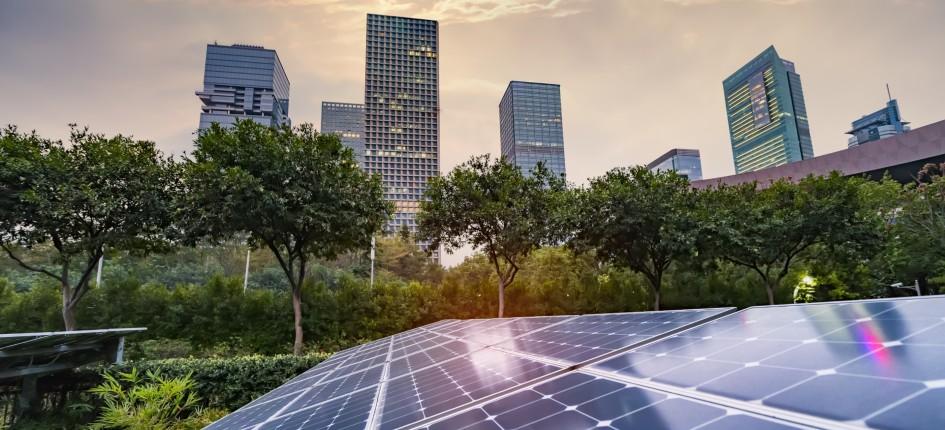The circular economy provides a reduce, reuse and recycle model that enables our economies to grow while maintaining our planetary boundaries. Recent trends and developments are helping to redefine what our circular industries are, how innovation can increase circularity, and also identify what the limitations exist for the circular model.
Recent activities within the circular economy framework in Switzerland include:
- Yokogawa establishing the Yokogawa Innovation Switzerland as the Center for Bio Business
- 27 swiss startups take part in the CE Incubator
- Geneva-based private bank Bonhôte & Cie invests in Decalia's circular economy fund
- Kickstart launches Circular Economy Initiative in cooperation with Impact Hub Switzerland
- Mitsubishi Chemical Advanced Materials in Zurich acquires German carbon fibre recycling companies
- An legislative initiative was launched to promote adoption of CE
Here is a brief summary from around the world on circular economy activities from clean technology innovators across the industrial landscape.
Circular Economy Updates in the Transportation & Logistics Sector
One of the key waste challenges in mobility is the volume of end-of-life lithium-ion batteries that will be coming out of electric vehicles in the coming decade. Between 2019 and 2030, around 1,000GWh of remanufactured and second life batteries are expected to enter the market supplied primarily by electric vehicles, for use in the stationary energy storage market. EV batteries last 10-12 years in vehicles; and contain materials such as cobalt, lithium, copper and nickel, which can be recycled or used in second-life applications. In March 2020, Fortum, BASF and Nornickel signed a letter of intent to develop a li-ion battery recycling cluster in Finland. Recovered battery materials will be used as feedstock in BASF’s planned li-ion materials precursor plant in the same area, creating a closed-loop system. Groupe Renault, The Mobility House, Mitsui and Daimler have set up a joint company to build a 20MW battery storage project in Germany using 2,000 second-life EV batteries. The capacity will be used as load management and backup power. Startups such as Beeplanet Factory in Spain are getting into the market and developing second-life value streams for end-of-life EV batteries.
Other emerging players such as Northvolt are looking to make ensure the emerging EU battery manufacturing start outs with the circular principles at its core, instead of discarding its waste products in landfills and junk yards. This June, the company partnered with Norwegian aluminum producer Norsk Hydro to recycle EV batteries.
Innovation in the logistics sector, such as product traceability, is enabling supply chain circularity and reverse logistics. Circular IQ has developed a platform that allows corporations to develop criteria for sustainability and circularity and measure the sustainability of their supply chain based on those criteria using data-based solutions. Kezzler is a Norway-based developer of a supply chain tracking solution using blockchain and serialization. The SaaS platform and barcode-based tracking mechanism allows each product to be tracked along its journey to the consumer. This level of visibility into where a product is can provide insight into waste along a supply chain and enables reverse logistics and returns for unused or end-of-life products.
Circular Economy Updates in the Agriculture & Food Sector
Increasing circularity in the food system will help address climate change, increase global biodiversity and improve the health of cities where 80% of food will be consumed by 2050. Whether it is nutrient looping on the farm, reducing waste by shortening the supply chain, packaging innovation, reducing food waste in retail, or upcycling food waste at end-of-life, there are technological, logistical, and business model innovations driving circular design thinking in food.
Starting in the field, the drive to improve soil health through regenerative agriculture practices focuses on nutrient looping. Biological field treatments such as available from AgroSustain is an important part of this, ensuring chemical nitrogen fertilizers do not have to be added year on year, and relies on natural processes to recover nutrients in the soil. In the supply chain, Apeel Sciences is taking food waste and turning it into a cellulosic coating, which is sprayed onto fruits and vegetables. This recycles food waste, reduces plastic use, and reduces waste across the supply chain by extending shelf life, closing the loop in fresh produce. Increasing local food network organization, either through optimization software such as Fliit or Crisp, or by creating secondary markets such as Olio, Imperfect Foods or Full Harvest. Finally, if food waste is generated, Kitro’s technology measures and manages waste to optimize the use of resources, before companies such as Schachar Group upcycle it into new materials such as fertilizer, Ynsect turn it into animal feed using insects or Renewal Mill turn it into new food ingredients.
Circular Economy Updates in the Energy & Power Sector
Industrial and Commercial customers are increasingly demanding cheap, reliable, low-carbon power, and are looking to retrofit existing systems to recovery. In Europe, regulations are driving leadership in the waste-heat to power market. Innovation in the space is focused on capturing low-grade heat (under 250 degrees) in order to target the some of the light commercial market, replacing radiators on industrial engines, reusing heat from data centers. Enjay for example, develops an energy recovery unit that works in greasy commercial kitchen ventilators. In 2019 they raised $3.5 million in seed funding from undisclosed investors. Currently operating with partner Burger King Scandinavia (500 locations) and Vasakronan, looking to expand outside the Nordics in 2020/21. Some emerging Swiss-based companies in the waste heat to recovery sector include Mithras, Talbot and Swiss Blue Energy.
Circular Economy Updates in the Resources & Environment Sector
The waste and recycling sector is making progress with circularity, however only 9% of the 100 billion tons of material produced every year is reused. Innovation is helping to improve the efficiency of Material Recover Facilities (MRFs) and reducing contamination. Technologies include robotic arms which can autonomously sort materials, and smart cameras, which can identify materials down to a molecular level. AMP Robotics, developer of AI-guided robotics, computer vision and deep learning system to improve the economics of recycling, raised $16 million in November 2019 in a Series A round. Greyparrot, provide computer vision solutions to power next generation robotics and smart systems for waste management. In May 2020, the company raised $2.2 million in a seed round.
One of the real successes in reuse is Loop, developer of a reusable packaging delivery and collection service for waste-free shopping. Loop has multiple high-profile corporate partnerships with retailers including Walgreens, Kroger, Gillette and Tropicana as well as UPS for its delivery and pick-up service. The partnerships are trailing Loops reusable packaging scheme and innovative business model. Another Reuse sector which is booming in investment is clothing reuse, social apps like UK-based Depop raised $63 million in its last growth equity round in July 2019, while Lithuania-based Vinted, raised $141 million in a Growth Equity round in October 2019.
In addition to resource efficiency and recovery cleantech innovators are also helping to restore ecosystems. Take oceans for example, the Ellen MacArthur Foundation estimates that by 2050 there will be more plastic in the ocean than fish. Companies like the Ocean Clean-up, developer of autonomous ocean vessels, which collects plastic and non-biodegradable waste, raised $1 million in Grant funding in May 2020 from Coca-Cola and Benioff Ocean Initiative, bringing its total of Grant funding raised to $22.7 million. Similarly, Blue Ocean Gear participated in the Ocean Solutions Accelerator last year to continue developing connected fishing gear to avoid lost nets, ghost catch and ocean pollution.
Circular Economy Updates in the Material & Chemicals Sector
The chemicals industry remains largely linear and fossil fuels serve as the de facto feedstock. Historically, increased circularity has been achieved through improvements in process efficiency, resulting in materials savings. Advances in AI and machine learning have opened up new opportunities in this area, with early-stage innovators, Eigen Control and Erium both attracting investments in recent months. Industrial symbiosis can also contribute to a circular economy. LanzaTech is well known for production of ethanol from steel production off-gas. More recently, the company has partnered to produce other chemicals and spun out LanzaJet for production of Sustainable Aviation Fuel. Renewable feedstock is required to achieve circularity in the long term and traction is now apparent beyond utilization of energy crops. UPM invested $650 million in a wood-based biorefinery earlier this year while developer of biomass deconstruction technology, Renmatix recently raised funding. Processing of plastic waste into chemicals via chemical recycling can also realize materials savings, but innovator focus is shifting towards plastic-to-plastic models. Meanwhile, CO2 can potentially be an important source of carbon for the chemicals industry. Companies including Opus 12 have continued to attract funding to develop electrochemical reduction processes.
Advanced materials are key to extending product lifetimes and coatings and sprays have been widely used for this purpose. Advanced manufacturing techniques such as additive manufacturing (AM), can result in materials savings. Printing-on-demand reduces reliance on production of spare parts and can also be used for printing parts which are no longer available, thereby extending product life. Velo3D, a metal AM printer developer, and Azul 3D, a plastic 3D printer developer, both recently raised funding to bring high-volume production to the market. Further, waste materials could be incorporated in to print production process with Molyworks is developing a recycling foundry which converts metallic scrap into metal powders for additive manufacturing at the point-of-need.
In Summary
The impact of the circular economy will play out over the next several years. It is clear many innovators, driven by new technologies and market demand are well-positioned to capitalize on the opportunities. For more information and insight into the circularity market, please join us at Cleantech Interactive - The Road to Circularity, 22-23 September to meet the innovators, investors and corporates working together to transform the future.






